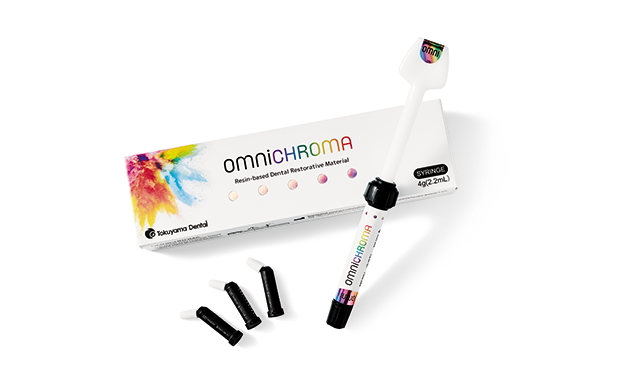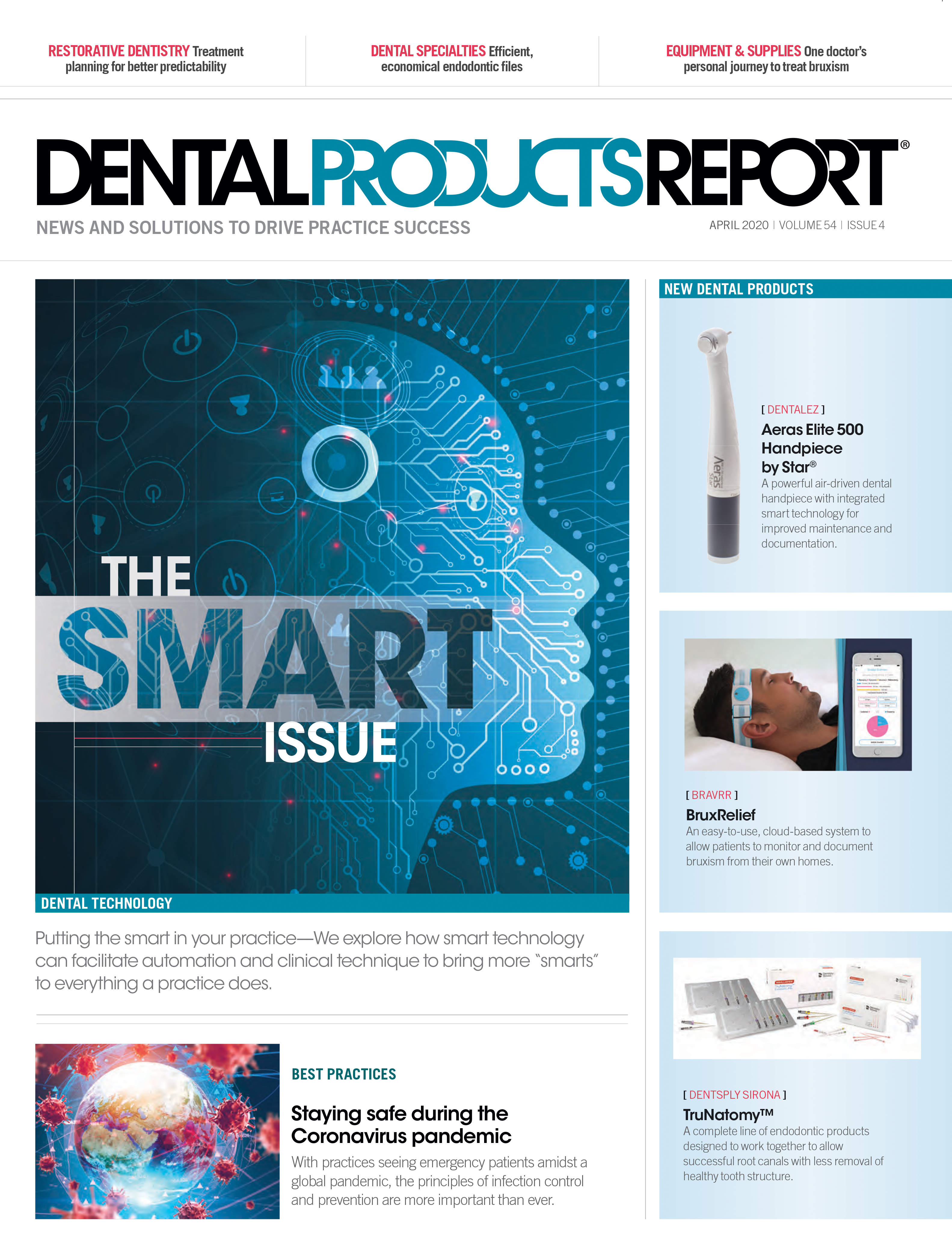The profession of dentistry continues to be enhanced by industry leaders that improve the quality of materials that are available, therefore improving the quality of care that we provide our patients.
Tokuyama Dental America continues this trajectory by developing innovative products that are easy to use and have broad applications. The recently introduced OMNICHROMA composite, with its universal color-matching capability and excellent mechanical properties, is yet another example of Tokuyama Dental America’s innovation.
OMNICHROMA
- The first universal composite that matches every patient’s tooth shade with a single shade of composite
- Saves time and money by removing the need for shade selecting and the need to keep excess product for incidental shades
- The red-to-yellow color combines with the reflected color of the patient’s surrounding dentition, to result in a perfect match with no added dyes or pigments
Tokuyama Dental America
877-378-3548 | omnichroma.com/us
Dental professionals continue to seek products that make their clinical workflow more efficient. Because of the ability of OMNICHROMA to blend with any tooth shade, the shade-selection step is removed, the need for a high-cost inventory of multiple composite shades is removed, and a high-quality restoration can be placed with less clinical chair time.
The predictability in placement of OMNICHROMA also contributes to its unique nature. Prior to light curing, the opaque-white material has a creamy consistency that is easy to place, easy to sculpt with hand instruments and does not slump after placement. Once cured, it mimics the color of the adjacent tooth structure and offers a highly polished surface that looks very natural. It gives the patient a long-term, esthetic restoration they can rave about.
Case 1
A 12-year-old patient presented with multiple moderate posterior interproximal carious lesions requiring restoration. After application of a 20 percent benzocaine topical gel into the sulcus of the upper left second bicuspid, anesthesia was obtained with infiltration using 4 percent Articaine and 1:100K epinephrine.
A W3 rubber dam clamp was atraumatically placed and a non-latex rubber dam applied (Figure 1). The preparations were performed with a #245 carbide bur from Brasseler USA with copious water spray. A #4 round bur from Brasseler USA was used to confirm the removal of infected dentin.
The teeth were prepped and sand blasted with 50-micron aluminum oxide (Figure 2) and then a Composi-Tight 3D Fusion Sectional Matrix System from Garrison Dental Solutions was placed to control the interproximal placement of composite (Figure 3).
Enamel was acid etched with Etch-Rite 38 percent phosphoric acid from Pulpdent. Dentin was bonded with Bond Force adhesive from Tokuyama Dental America and light cured for 10 seconds. The preps were filled in 2 mm increments with OMNICHROMA and light cured for 20 seconds with The Light, a high-powered LED light from GC America. The initial pre-cured OMNICHROMA demonstrates its opaque-white color (Figure 4).
Occlusion was adjusted using a Piranha #8 from SS White Dental round single-use diamond bur. The restorations were polished and shaped with a Brownie silicone polisher from Shofu Dental and Sparkle Diamond Polishing Paste from Pulpdent to achieve a natural enamel luster.
The completed restorations were both esthetically pleasing and functional (Figure 5).
Case 2
A 21-year-old patient with inadequate oral hygiene presented with a moderate anterior interproximal carious lesion requiring restoration (Figure 6). After application of a 20 percent benzocaine topical gel into the sulcus of the upper right lateral incisor, anesthesia was obtained with infiltration using 4 percent Articaine and 1:100K epinephrine.
A W2 rubber dam clamp was atraumatically placed and a non-latex rubber dam applied (Figure 7). The preparation was performed with a #245 carbide bur from Brasseler USA with copious water spray. A #4 round bur from Brasseler USA was used to confirm the removal of infected dentin.
The tooth was prepped and sand blasted with 50-micron aluminum oxide (Figure 8) and then a clear polyester matrix tape from 3M Oral Care was applied to control the interproximal placement of composite (Figure 9).
Enamel was acid etched with Etch-Rite 38 percent phosphoric acid. Dentin was bonded with Bond Force adhesive and light cured for 10 seconds. The preparation was filled in 2 mm increments with OMNICHROMA and The Light was used to light cure for 20 seconds.
Occlusion was adjusted using a Piranha #8 from SS White Dental round single-use diamond bur. The restoration was polished and shaped with Sof-Lex polishing disks from 3M and Sparkle Diamond Polishing Paste to achieve a natural enamel luster.
The completed restoration was both esthetically pleasing and functional (Figure 10).
Case 3
A 61-year-old patient presented with an abrasive lesion requiring restoration (Figure 11). After application of a 20 percent benzocaine topical gel into the sulcus of the lower left canine, anesthesia was obtained with infiltration using 4 percent Articaine and 1:100K epinephrine.
The lesion did not require further preparation.
The tooth was sand blasted with 50-micron aluminum oxide. Enamel was acid etched with Etch-Rite 38 percent phosphoric acid. Dentin was bonded with Bond Force adhesive and light cured for 10 seconds. The preparation was filled with a single increment using OMNICHROMA and the initial pre-cured OMNICHROMA demonstrates its opaque-white color (Figure 12). The restoration was light cured for 20 seconds with The Light from GC America.
The restoration was polished and shaped with a Brownie silicone polisher, and Sparkle Diamond Polishing Paste to achieve a natural enamel luster.
The completed restoration shown with a VITA shade guide tab A4 demonstrates the chameleon capabilities of OMNICHROMA (Figure 13).
Because composite restorations are the most widely placed restorations in the dental practice today, a product that enhances efficiency and predictability is paramount. OMNICHROMA satisfies the most important elements that establish it as a potential leader in the composite marketplace: ease of use and predictability of placement. OMNICHROMA is indicated for all anterior and posterior direct composite restorations as shown in the documented case studies.

